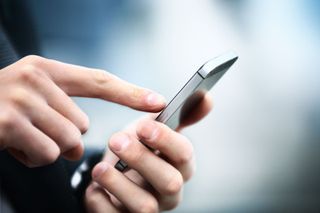Aussies are holding on to their phones longer and using more data than before
Survey says...

The 2018 Deloitte Mobile Consumer Survey has revealed that 39% of Australians think they use their phones too much, while 26% of Aussies feel they’re able to limit their dependence on their devices.
Another 34% say they’re trying to use their smartphones less but aren’t succeeding in their efforts.
However, with the rise in the cost of a flagship handset, it’s no surprise that Australians are holding on to their phones for longer. The number of people with new phones (handsets that are less than 18 months old) has dropped to 58%, down from 61% in 2016.
..and we’re live
Out of the 2,000 Australians surveyed, almost a quarter of the participants said they were watching more video content on their phones. The survey reckons that number is a staggering 400% higher than it was in 2016.
This, too, shouldn’t come as a surprise either. With phone plans offering more and more data, consumers are comfortable with streaming TV shows and movies on their phones.
“Our phone is now our primary computer as well as increasingly a very important entertainment device,” explained Kate Huggins, a consulting partner at Deloitte. “In the past, it was quite normal behaviour to wait until you’re on a Wi-Fi network before using those data-rich applications.”
Of note is the rise in the number of people watching live TV on their handsets; 23% of respondents said they watch live TV each week on their phones. This number is up from 19% in 2017 and just 6% in 2016.
Get daily insight, inspiration and deals in your inbox
Get the hottest deals available in your inbox plus news, reviews, opinion, analysis and more from the TechRadar team.
Calling out loud
According to this 2018 survey, smartphone ownership Down Under is at its highest, with 89% of Aussie currently owning a handset. However, that's only a 1% increase from last year.
With the spread of smartphone use at its highest, the survey also found that 16% of respondents regularly use the digital assistants on their smartphones – a slight increase from the 14% in 2017.
It has also been revealed that 23% more Australians are using fingerprint authentication on their phones instead of passwords as compared to last year. This includes a rise of 53% in the use of fingerprint authorisation for mobile payments and an increase of 67% using fingerprint technology to authorise money transfers.
"The smartphone is becoming even more central to the way we work (70% of us use smartphones for work, while 90% of businesses rank a connected work place in their top priorities), the way we access entertainment and how we carry out our daily lives," said Peter Corbett, Deloitte Partner and National Telecommunications lead.
"A consumer’s choice of phone impacts their access to the cloud, the expanding world of voice assistants, streaming services, smart home technologies, the ways people pay for goods and services, and even the ways they monitor their daily health," he added. "The impact of replacing a handset can now have significant influence on the services we access, which is another reason people are changing phones less often."

Sharmishta is TechRadar's APAC Managing Editor and loves all things photography, something she discovered while chasing monkeys in the wilds of India (she studied to be a primatologist but has since left monkey business behind). While she's happiest with a camera in her hand, she's also an avid reader and has become a passionate proponent of ereaders, having appeared on Singaporean radio to talk about the convenience of these underrated devices. When she's not testing camera kits or the latest in e-paper tablets, she's discovering the joys and foibles of smart home gizmos. She's also the Australian Managing Editor of Digital Camera World and, if that wasn't enough, she contributes to T3 and Tom's Guide, while also working on two of Future's photography print magazines Down Under.
